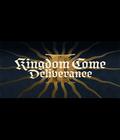
Genre: Tactical Shooter
Publisher: Gotham Games
Developer: Pivotal Games
Release Date: April 22, 2003
Buy 'CONFLICT: Desert Storm':
Xbox | GameCube | PC | PlayStation 2
 I’ve never been much of a tactical shooter guy, instead preferring the straightforward visceral action of fast-paced deathmatches over the slow plodding progression of team-based strategic combat. I wasn’t looking forward to acclimating myself with Conflict: Desert Storm, a game that has been around since last year on every system but the GameCube and met an only lukewarm critical reception. Why Gotham waited until now to port the game over to Nintendo’s hardware is a mystery, and perhaps one that is better left unsolved. In any case this game wasn’t very promising a year ago and it’s even less tempting today. Hardcore fans of the genre may get a kick or two out of it, but the sloppy gameplay mechanics and underwhelming technical presentation won’t win over any new recruits.
I’ve never been much of a tactical shooter guy, instead preferring the straightforward visceral action of fast-paced deathmatches over the slow plodding progression of team-based strategic combat. I wasn’t looking forward to acclimating myself with Conflict: Desert Storm, a game that has been around since last year on every system but the GameCube and met an only lukewarm critical reception. Why Gotham waited until now to port the game over to Nintendo’s hardware is a mystery, and perhaps one that is better left unsolved. In any case this game wasn’t very promising a year ago and it’s even less tempting today. Hardcore fans of the genre may get a kick or two out of it, but the sloppy gameplay mechanics and underwhelming technical presentation won’t win over any new recruits.
The job of familiarizing myself with the way of the squad-based shooter began with a fairly entertaining tutorial narrated by a humorously-genuine military Sergeant who demanded that I start and end all sentences addressing him with “Sir! Yes Sir!” All the while shouting incessant orders at me, I was able to learn how to move on the battlefield, pilot a military vehicle, stab a man in the back, and command squads. After that, I was thrown into my first mission.
A solo mission that required rescuing a friendly sniper from enemy possession, blowing up a bridge with a chunk of C4, and killing a horde of angry Iraqi’s with their own gun emplacements. On paper this sounds like a fun action-packed digital buffet but once you catch a whiff of the game’s spastic auto-aiming system, clunky gameplay, and confusing squad controls - even mass destruction doesn’t sound all that appealing anymore. Not that there is a whole lot of senseless destruction in Conflict: Desert Storm, everything is by the book and “realistic”, whatever. Eventually the mission was completed and the game’s focus on earning experience became clear; as you complete various tasks or develop certain habits during a mission, your characters will develop improved skills. Specializing in long-range combat will increase marksmanship. Habitually using med kits will increase your rating as a medic, etc. But regardless of how much I refined the skills of my soldiers, the game’s technical inadequacies kept me from ever actually having fun.
Eventually you’ll have all squad members in tow and get down with some team-based strategy. Luckily, the AI system used in Conflict: Desert Storm is mostly adequate and enemy ambushes can be quickly countered by ordering your teammates to open fire. Pushing left on the D-pad you can take over manual control of other squad members, which is sometimes necessary to avoid unnecessary friendly fire. Though somehow the enemy soldiers quickly pick up on your exact location once they catch up with the game’s limited draw distance, regardless of whether you are crouched hidden behind bushes or not. So crawling on your belly is usually the most failsafe method of approach. Unfortunately, wriggling around on the ground at tortoise speed doesn’t make for a very exciting time. But as this is supposed to be something of a simulated military experience, perhaps “exciting” is the last thing you’d be looking for in a deadly situation.
But there is a certain degree of satisfying realism in the game, such as the terrain that you’ll conduct missions on, which feature useful structural objects such as blown-apart buildings and abandoned wreckage that can easily be used for cover. Also, the ability to pilot vehicles adds a layer of entertainment to the experience. Being able to drive a armored 4x4 equipped with a .50 caliber machine gun and an anti-tank rocket launcher does have its fringe benefits. Though the way vehicles handle are anything but realistic, which tends to put a damper on the proceedings.
Conflict: Desert Storm is not an easy game, I’ll give it that. The built-in gameplay features that are supposed to make the process of killing and not being killed, such as auto-aiming and relatively autonomous AI back-up, often end up being the very reasons you’ll end up getting capped in the cranium. Switching into first-person mode and taking manual aim is usually a more efficient route than relying on auto-aim and micromanaging your squad actions is normally necessary to avoid the repercussions that come from bonehead AI algorithms. But I don’t claim to be an expert on tactical-shooter etiquette, and quite contently so – I do know one thing though; primitive recreations of real-life war is depressing on multiple levels.
Conflict: Desert Storm features technically accurate yet wholly unimpressive visuals. Soldiers and objects are composed of a minimal amount of polywhirls and it becomes quite evident early on that no expenses were spared on mo-cap sessions. Though the arsenal of real-life weaponry that you’ll use throughout the game are believably rendered and all react accordingly, sometimes with devastating result. A beneficial side effect of the game’s undemanding visual presentation is fluid frame rates all the way through, but the lack of proprietary flair that the GameCube is capable of instantly marks Conflict as just another multi-port game. There isn’t a whole lot to write home about in the sound department, either. Voice acting is merely passable, as it takes little tonal skill to successfully bark out orders or confirm squad locations. Sound effects consist of generic aural representations of the on-screen action and the various guns you’ll fire sound strangely muted for some reason.
Should you buy Conflict: Desert Storm on the GameCube if you’ve already played it on any of the other platforms it was released on last year? Logic would dictate that the answer is no. But should you consider buckling down with the game if you are a fan of the strategic squad-based shooter genre and only own a GameCube? I’m probably not the best person to give that kind of advice. But I will say this, I didn’t have much fun with the game and you might not either.
Score: 6.2/10






































